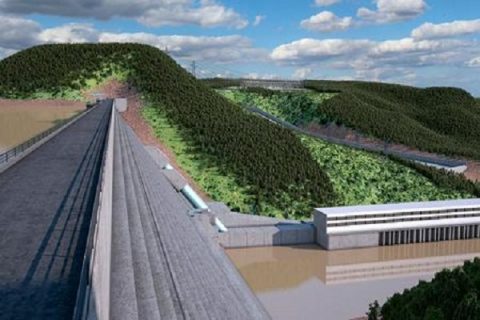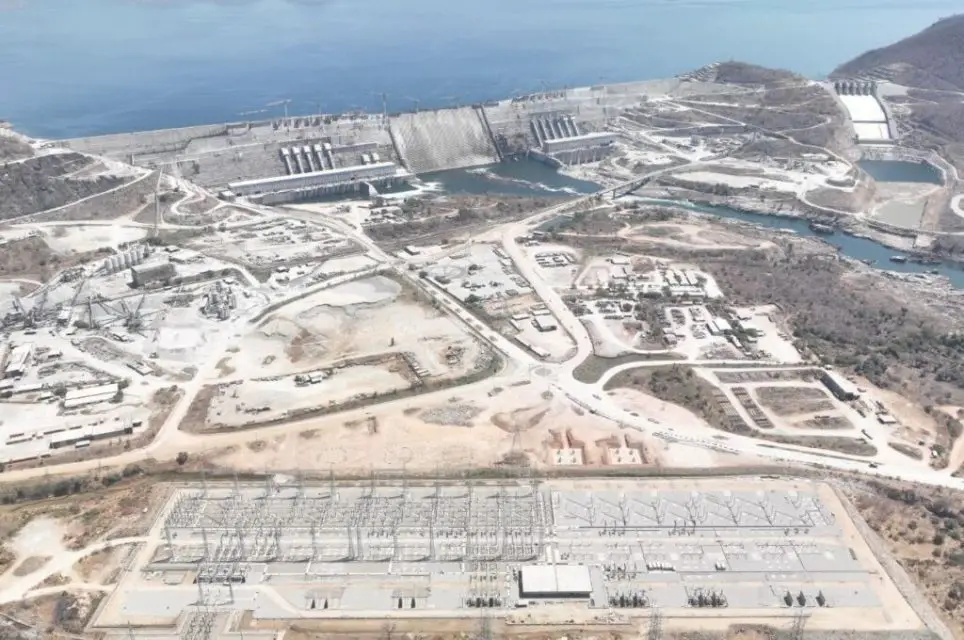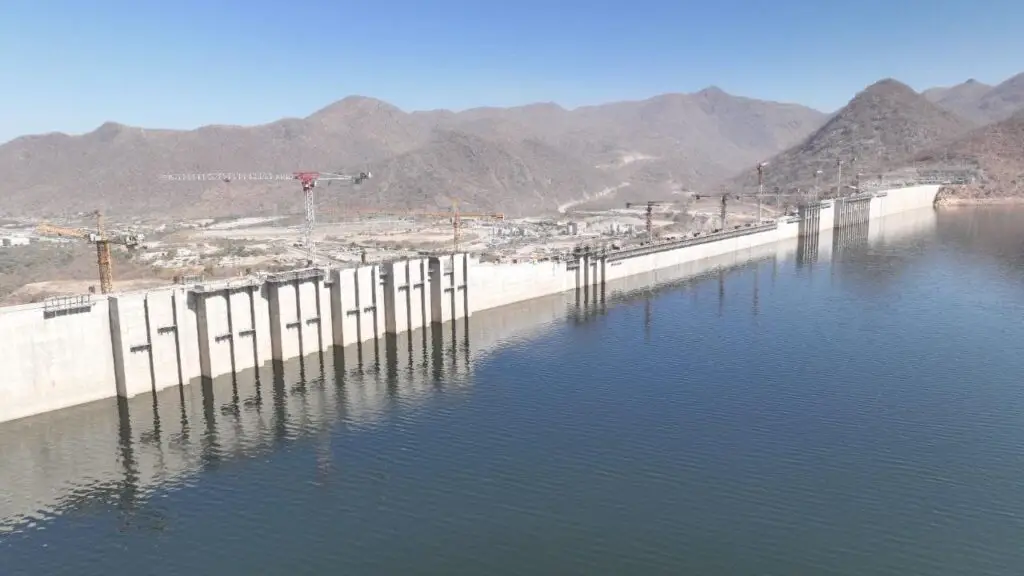Updated September 2, 2025: The completion of Africa’s largest hydroelectric dam is one that is instigated a mixture of excitement and communal strain as its inaugural date nears. The dam was inaugurated in September and it is already a point of pride for the prime minister, who is touting more big schemes. The prime minister noted about the project’s inauguration in parliament, noting his approval and zeal. Nearly half of Ethiopians still live without electricity. The multi-billion-dollar project aims to change that as its completion signifies that more of Ethiopia’s residents will be added to the country’s grid. Ethiopia’s mega-dam on the Nile, set to open in September, will eventually earn the country $1bn a year, Prime Minister Abiy Ahmed said. The project has stirred sharp tensions with neighbors, not least Egypt.
“We will do other projects like the GERD in the next five, 10 or 15 years,” the prime minister said in a televised interview on state media. “We see that we can finish what we have started.” However, despite the jubilations on the dam’s completion, regional tensions still soar high as Egypt and Sudan do not seem pleased. Sudan reported a decrease in the Blue Nile’s water volume earlier last week, an aspect that highlights the ongoing tensions.
According to the World Bank, as of January 2025, some 60 million of Ethiopia’s 130 million people lived without electricity. Egypt, which relies on the Nile for 97% of its water needs – especially for farming – continues to invoke historic rights over the river and says the GERD is an “existential” threat. Africa continues to chart a way forward in hydroelectric projects across the region, with projects such as the world’s largest hydroelectric dam, the Grand Inga dam, gradually taking shape and expected to commence construction soon. Other than the Grand Ethiopian Renaissance dam, Ethiopia is also making strides in the Koysha hydropower dam, expected to be Ethiopia’s second largest once completed. Construction of the Koysha Hydropower Project in the South West Ethiopia Peoples’ Region has reached 70 percent completion, according to official data. The dam has now reached a height of 128 meters as work continues on key civil structures. The project, managed by Ethiopian Electric Power, is being built on the Omo River by Italy’s Webuild Group. Moreover, the dam is being constructed at an estimated cost of $2.7 billion. Additional financing of about 950 million US dollars has been secured to support the next phase of construction. Designed to generate between 1,800 and 2,160 megawatts of electricity, Koysha is Ethiopia’s second-largest hydropower facility after the Grand Ethiopian Renaissance Dam.

April 6, 2024: The construction of Africa’s largest hydroelectric dam, the Grand Ethiopian Renaissance Dam, is in its final phases. Situated on the Blue Nile River, the Grand Ethiopian Renaissance Dam (GERD) is a monumental testament to Ethiopia’s ambitions. It signifies the country’s desire to pursue modernization and economic development. Initiated in April 2011, it has taken 13 years for the project to enter its completion phase. Once completed, this colossal hydroelectric project will be Africa’s largest dam. Over the years, the estimated construction cost of the dam has accumulated up to $4 billion. At the start of 2024, the construction of the Grand Ethiopian Renaissance Dam (GERD) had reached a significant milestone. Work on the dam was at 94.6% of completion, signaling a new era for Ethiopia’s energy and infrastructure sector.
Project Summary:
Location: Ethiopia
Capacity: 5GW
Significance: Africa’s Largest Hydroelectric Dam
Project duration: 13 years
Cost of Project: US$4 Billion
The Significance of the Completion of Africa’s Largest Hydroelectric Dam
 Once completed and operational, the GERD is expected to double Ethiopia’s electricity generation capacity, increasing the country’s power supply. The GERD will also propel the nation towards becoming a major regional power exporter. Africa’s largest hydroelectric dam shows promise in generating over 5 gigawatts of electricity annually. It will also facilitate addressing the power issues and needs of over 50% of the Ethiopian population currently living without it. The dam is also a pathway to economic growth and regional leadership for Ethiopia. They plan to export electricity worth USD 1 Billion annually to neighbouring countries. This aligns with Ethiopia’s broader goals of economic diplomacy. Additionally, the project expects to create significant employment opportunities, improve agricultural irrigation potential, and mitigate flooding. The completion and operation of Africa’s largest hydroelectric dam is highly anticipated.
Once completed and operational, the GERD is expected to double Ethiopia’s electricity generation capacity, increasing the country’s power supply. The GERD will also propel the nation towards becoming a major regional power exporter. Africa’s largest hydroelectric dam shows promise in generating over 5 gigawatts of electricity annually. It will also facilitate addressing the power issues and needs of over 50% of the Ethiopian population currently living without it. The dam is also a pathway to economic growth and regional leadership for Ethiopia. They plan to export electricity worth USD 1 Billion annually to neighbouring countries. This aligns with Ethiopia’s broader goals of economic diplomacy. Additionally, the project expects to create significant employment opportunities, improve agricultural irrigation potential, and mitigate flooding. The completion and operation of Africa’s largest hydroelectric dam is highly anticipated.
Also read:
The Challenges Facing the Grand Ethiopian Renaissance Dam
Africa’s largest hydroelectric dam and the symbol of Ethiopian aspiration are also focal points of regional tension, particularly between Egypt and Sudan, which lie downstream. The Nile is a lifeline for these nations. Based on this, the dam’s construction has been at the center of solving a complex water-sharing puzzle. On one end, Egypt historically depends on the Nile waters for nearly all its agricultural and domestic use. The country views the dam as an existential threat to its water security. On the other hand, Sudan is also skeptical about the dam’s construction. While standing to benefit from regulated floods and cheap electricity, it remains cautious about the dam’s operation and safety implications. For this reason, damming the Nile is a contentious issue for Egypt and Sudan, for whom the river is an indispensable resource. 
Furthermore, reservoir sedimentation is the major impediment to sustaining the operation of GERD indefinitely. Due to its large hydrologic size, all the sediment entering the GERD reservoir will be trapped unless turbid density currents can be released. Given the national importance of the GERD project as a sustainable source of power and the economic and social consequences of degraded land use in the watershed, land management to reduce erosion will result in long-term benefits at multiple levels.
The State of Affairs Regarding the Construction of the Grand Ethiopian Renaissance Dam
As the construction of Africa’s largest hydroelectric dam nears completion, negotiations between Ethiopia, Egypt, and Sudan have reached a critical juncture. In the round of talks held in Cairo on October 23, 2023, the impasse persisted despite intense diplomatic efforts. There is no agreement or consensus on the dam’s operations. The international community, including the United States and the African Union, has urged the parties to resolve peacefully. However, as of early 2024, there is no lasting settlement. Downstream countries seek assurances that their water security will not be compromised by the dam’s operation. Africa’s largest hydroelectric dam is more than just a dam, and it is a symbol of Africa’s infrastructural ambition. It is also a test for international diplomatic relations and water cooperation. Its completion could sign a new dawn of energy independence and economic integration for Ethiopia and its neighbours.
Also read:
Grand Ethiopian Renaissance Dam (GERD) New Round of Negotiations Start
Grand Ethiopian Renaissance Dam (GERD) Project
